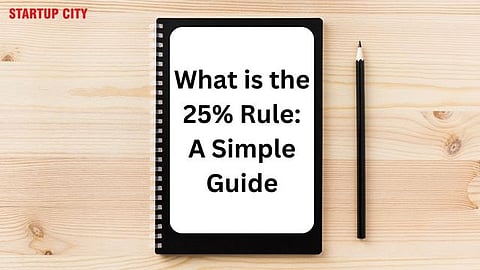

The term "25% rule" might seem complex initially, but it becomes clear upon closer examination. Essentially, it serves as a guiding principle in two distinct realms: public finance and intellectual property law.
Let's delve into its significance and application within each domain.
In the realm of public finance, the 25% rule advises that a local government's long-term debt should not exceed 25% of its annual budget. This is vital because excessive debt accumulation can lead to financial difficulties, hindering the government's ability to repay.
In the domain of intellectual property, the 25% rule stipulates that if you get profit from someone else's patented product or trademarked service, you should compensate them with a royalty fee equivalent to 25% of your earnings from its sale. This ensures an equitable distribution of profits to the original creator.
While not legally binding, the 25% rule serves as a practical guideline for both financial and intellectual property decisions. It fosters fairness and sustainability in governance and business practices, ensuring an equitable distribution of profits and preventing overborrowing.
Consider a scenario where a local government aims to construct a new park but faces budgetary constraints. In response, it opts to secure a loan through bond issuance.
The 25% rule becomes pertinent in this situation, suggesting that the accumulated debt should not surpass 25% of the government's annual revenue.
This precautionary measure safeguards against overborrowing, ensuring that the government remains capable of meeting its repayment obligations realistically.
Failure to adhere to this rule can have serious repercussions. It can lead to difficulties in repaying loans, potentially resulting in a downgrade in credit rating.
This, in turn, makes future borrowing more challenging and expensive. Bondholders are cautious when lending to governments that disregard the 25% rule, aware of the financial risks involved.
Let's suppose you've developed an innovative idea for a new product, but another entity holds the patent for it. If you want to sell your product using their patented technology, you'll likely have to pay them a royalty fee.
The 25% rule helps decide how much you should pay them by suggesting that 25% of your profits should go to the patent owner as a royalty fee.
However, it's crucial to recognise that assessing the value of intellectual property can be a delicate endeavour. While the 25% rule offers a method for calculating royalties, it overlooks variables such as marketing expenditures.
Furthermore, legal precedents, such as the 2011 case of Uniloc USA, Inc. v. Microsoft Corp, highlight instances where courts have deemed the 25% rule an unreliable metric for assessing patent damages.
In conclusion, although the 25% rule offers valuable guidance for financial management and intellectual property matters, it's crucial to view it as a flexible guideline rather than a rigid rule.
By grasping its underlying principles, governments and businesses can navigate more wisely, ensuring decisions that serve the interests of all stakeholders involved.